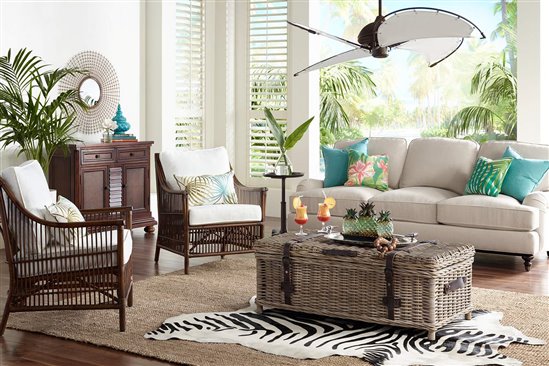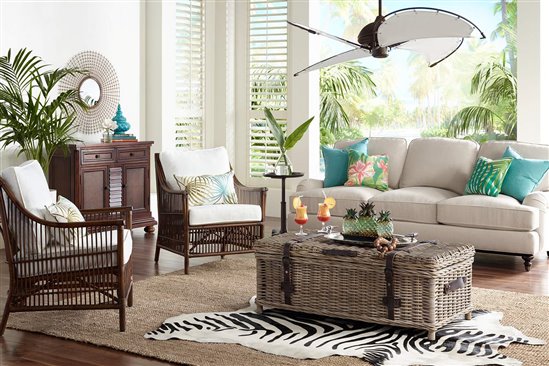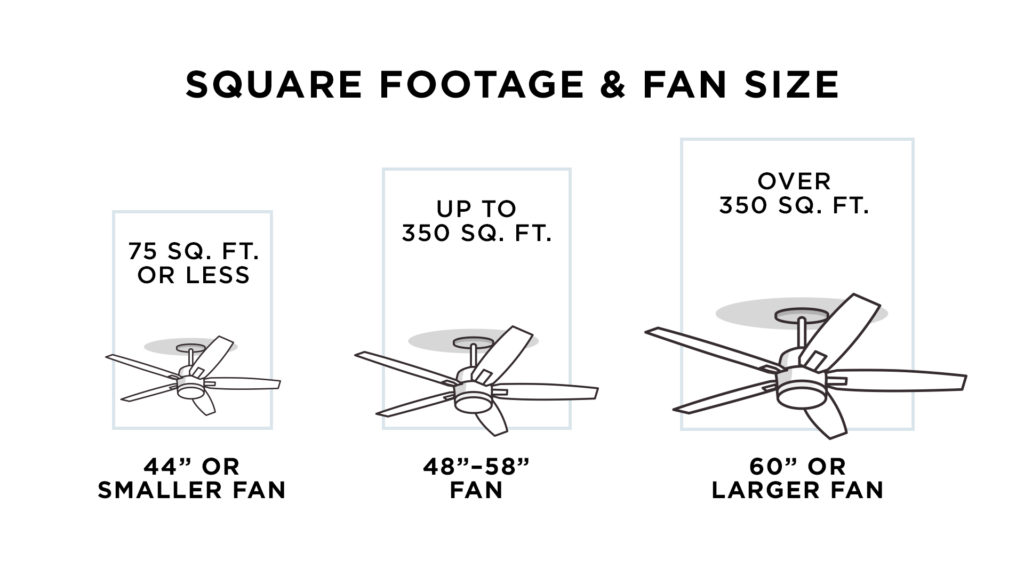Quick Guide: Buying a Ceiling Fan

Want to stir things up around the house this summer? Add a ceiling fan!
Ceiling fans do more than just bring about breezes. Designed with the latest home decor trends in mind, these overhead fans move in fashionable circles.

New Choices in Ceiling Fans
Ceiling fans work well in any home, thanks to a variety of finish and design options.
High-tech, contemporary designs have become popular in the last few years.
As a result, brushed nickel, steel, and sleek pewter finishes get thumbs-up approval from trendsetters. Earth tones like rustic copper and bronze are also hot-sellers. Ditto painted finishes and washes.
When looking at finishes, ornate filigree blade holders offer a graceful, turn-of-the-century ambiance. Brushed steel housing and light-colored maple blades offer the ultimate in contemporary styling. Classic polished brass finishes work well in more traditional homes.
Bigger Ceiling Fans for Bigger Rooms
The soaring ceilings and expansive great rooms in today’s newer homes have increased demand for large ceiling fans with bigger blades and longer down rods.
Manufacturers complied, creating phenomenal fans that move massive quantities of air and work well in 30-foot tall spaces and lofts.
Fan design isn’t the only thing that’s expanded. Places to put ceiling fans have also increased.
These fans bring a breeze to almost any home space, inside or out — from kitchens, bathrooms and dining areas to porches, patios and gazebos.

Ceiling Fans with Lights
With more than 14 million ceiling fans sold annually, most do double-duty, lighting a room as well as moving air.
In fact, the majority of ceiling fans are sold with a light fixture because consumers are usually replacing a light in their room.
The selection of ceiling fans with lights today offer a wide variety of lighting options that add interest to any home.
Some fans are designed from the start with built-in lighting. Others work with light kits, allowing you to mix-and-match light fixtures to create a customized look. Our Design Your Own Ceiling Fan pages allow you to select a fan size, motor, and blades, then pair that combination with a variety of fan lights.
Features to Consider with Ceiling Fans with Lights
When choosing lights for your ceiling fan, be sure they meet the room’s needs.
Work spaces like kitchens and home offices demand bright light. Bedrooms and dining rooms require more subdued illumination.
To create more relaxed lighting, consider ceiling fans with indirect uplighting.
Like garage doors and television sets, some ceiling fans utilize remote controls to not only adjust lights, but operate the fan itself.
In addition to turning fans on and off, some remotes automatically adjust the fan based on changes in the room’s temperature, turn lights on and off when you’re not home and dim lights as you leave the room.
Some dimmer switches may also allow you to adjust the light on a fan to fit your mood. However, we recommend that you consult with an expert to make sure a given dimmer will work with your fan.
Other Types of Ceiling Fans
There are many other types of designs for you to consider, depending on your room size, needs, and installation requirements. We’ve mentioned large rooms, but if you have a smaller room, there’s a ceiling fan design for you as well.
Hugger or flushmount style fans sit close to the ceiling and do not use a downrod. Because they don’t hang down low into the room space, they are ideal for smaller rooms, such as laundry areas or rooms that have lower ceilings. Low profile fan designs are another option for small rooms. These may have a downrod, but a very short one, making them a good choice for small spaces.
Ceiling Fans, Cooling, and Energy Efficiency
Ceiling fans don’t actually lower the temperature of a room like an air conditioner. But by moving air, they do make the room feel cooler.
Best of all, ceiling fans use only about as much energy as a 100-watt light bulb.
Studies show that by setting ceiling fans to spin in a counter-clockwise pattern, you can save as much as 40% off summer cooling bills without sweltering. Simply set the thermostat a few degrees higher and flip on the fan.
Studies also reveal that ceiling fans can help homeowners save as much as 10% on their heating bills. It can be 10-15 degrees hotter towards tall ceilings than on the floor in the winter, so set your fan blades to turn clockwise – the fan will move warm air back to the center of the room, pushing it down from the ceiling.
As you can see, there are as many choices as there are benefits to installing a ceiling fan in your home.
Questions?
Call 800-782-1967 to speak with one of our friendly, professional Lighting & Home Decor Consultants or visit a Lamps Plus location near you. Whether via phone or in person, we’re happy to help you assist you in completing your project.
More Ceiling Fan Ideas and Advice
How to Buy a Ceiling Fan – A Four Step Guide
